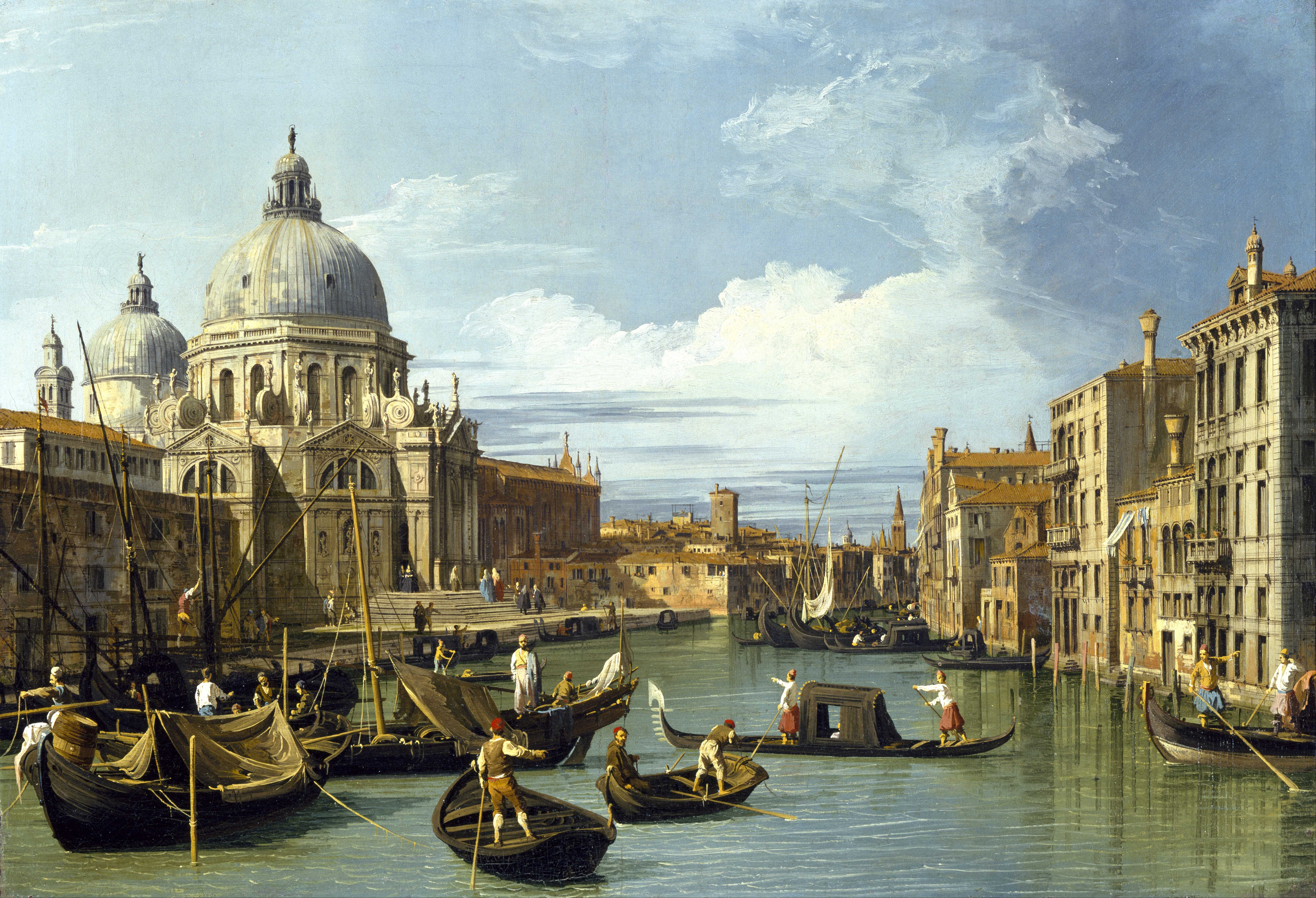So there I was thinking about Venice because KayYen had really nailed it with this photograph of the Grand Canal:
lighter and brighter than Guardi or Canaletto but no less perfect an image of the Grand Canal than the ones those guys painted, when this dropped out of one of the home-version feedreaders:

The Carlevaris was used by the Harvard Business Review as the header art for:
Why Innovators Should Study the Rise and Fall of the Venetian Empire
Most organizations would be happy to last for centuries, as the Venetian Republic did. From 697 to 1797 AD, Venice’s technological acumen, geographic position, and unconventionality were interlocking advantages that allowed the Most Serene Republic to flourish. But when change comes suddenly, it can turn strengths into weaknesses and sweep away even thousand-year success stories.
Venice’s military technology and the city’s pivotal location on the main trade routes of the time gave Venice several strong, mutually reinforcing advantages.HT: Alpha Ideas
The Arsenal, an advanced naval munitions factory that anticipated by several centuries the production-line method of manufacture, was the beating heart of the Venetian naval industry. From the thirteenth century on, the Arsenal nurtured creativity and spurred innovation and entrepreneurship in the construction of its galleys.
The city’s geographic location helped it to defend itself from both land- and sea-based invaders. This location, consisting of a series of islands in a marshy lagoon, also pushed it to develop a (then unusual) trading and moneylending economy, since there was little land to support agriculture. And its position at the top of the Adriatic Sea allowed it to become a vital trading hub, connecting the East with the West via the Mediterranean.
If, as Michael Porter wrote, competitive advantage stems from how “activities fit and reinforce one another….creating a chain that is as strong as its strongest link,” then strategic fit is something that the Venetian Republic had in spades.
But, like a lot of successful entities, Venice reached a point where it focused more on exploitation than exploration: Venetian traders followed existing paths to success. Entrepreneurs chose not to move away from traditional pathways. Established practices and preferences became more popular than exploration and speculation. Merchants and traders played the game of incremental innovation by focusing on efficiency and optimization. Determined to grow their own fortunes rapidly, they pressed their feet to the accelerator rather than charting new courses.
But toward the end of the 16th century the world was changing in ways that would make Venice less relevant. The Arsenal’s focus on galley ships made sense when the Mediterranean was the most important trading waterway. Alessandro Barbero, professor of medieval history at the University of Eastern Piedmont, in Italy, notes that the galley remained for a long time the favorite vessel of Venetian navigators. But the invention of seafaring galleons allowed countries bordering the Atlantic to set up new trade routes that did not flow through the Adriatic.
This age of exploration triggered the beginning of Venice’s decline. One huge advance in technology — ships that could survive at sea for months, even years — weakened Venice’s competitive advantage and the strategic fit of its competencies....MORE
The KayYen pic was used as the header art for the Boston Review's "Finding Ourselves in the Venetian Ghetto" with this quote as the introduction:
“We do not see things as they are; we see them as we are.”For comparison to the photo here's Canaletto's "Entrance to the Grand Canal":

Previously on Venice:
"How Venice Rigged the First, and Worst, Global Financial Crash"
The Perpetuities of Venice: Favored Investment of the Fourteenth Century 1%
"How a Medieval Friar Forever Changed Finance"
3D Printing: Apparently the Future Is To Be Found In 13th Century Venice
Another Post On Glass, This Time With "The Alchemist's Fallacy" (And Professor Nordhaus)
Goldenballs: Not For Nothing Was Jacob Fugger Known as “Jacob the Rich”
HBR: "The Hand Signals That Drove Business in Renaissance Europe"
Magicians, Mafiosos, a Missing Painting, and the Heist of a Lifetime
For Sale: Apartment In Freddie Nietzsche's (very impressive) Place In Venice
...Not bad for a nihilist

This opulent Venetian palazzo once belonging to Friedrich Nietzsche is either too much, or simply not enough, for a nihilist of his caliber, depending on how you slice it. The German philosopher lived in the 1600-built Palazzo Berlendis—set on the Fondamente Nuove by the feet of the Mendicanti bridge on the northern border of the city—between 1880 and 1887 and penned Thus Spoke Zarathustra here....
